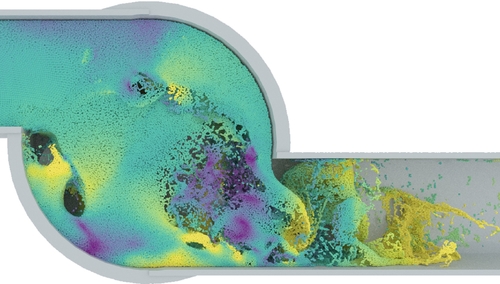Pre-recorded Sessions: From 4 December 2020 | Live Sessions: 10 – 13 December 2020
4 – 13 December 2020
Pre-recorded Sessions: From 4 December 2020 | Live Sessions: 10 – 13 December 2020
4 – 13 December 2020
#SIGGRAPHAsia | #SIGGRAPHAsia2020
#SIGGRAPHAsia | #SIGGRAPHAsia2020











Date: Thursday, December 10th
Time: 1:30pm - 2:00pm
Venue: Zoom Room 7
Note: All live sessions will be screened on Singapore Time/GMT+8. Convert your time zone here.
Abstract: Simulating liquid phenomena utilizing Eulerian frameworks is challenging, since highly energetic flows often induce severe topological changes, creating thin and complex liquid surfaces. Thus capturing structures that are small relative to the grid size become intractable, since continually increasing the resolution will scale sub-optimally due to the pressure projection step. Previous methods successfully relied on using higher resolution grids for tracking the liquid surface implicitly; however this technique comes with drawbacks. The mismatch of pressure samples and surface degrees of freedom will cause artifacts such as hanging blobs and permanent kinks at the liquid-air interface. In this paper, we propose an extended cut-cell method for handling liquid structures that are smaller than a grid cell. At the core of our method is a novel iso-surface Poisson Solver, which converges with second-order accuracy for pressure values while maintaining attractive discretization properties such as symmetric positive definiteness. Additionally, we extend the iso-surface assumption to be also compatible with surface tension forces. Our results show that the proposed method provides a novel framework for handling arbitrarily small splashes that can also correctly interact with objects embodied by complex geometries.
Author(s)/Presenter(s):
Yi-Lu Chen, ETH Zürich, Switzerland
Jonathan Meier, ETH Zürich, Switzerland
Barbara Solenthaler, ETH Zürich, Switzerland
Vinicius Azevedo, ETH Zürich, Switzerland
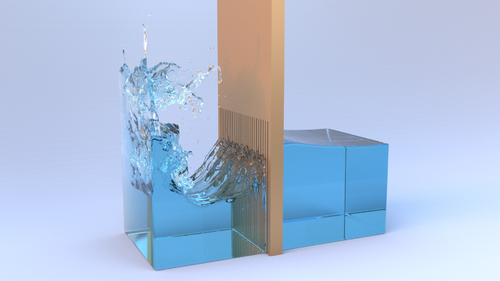
Abstract: We introduce a novel liquid simulation approach that combines a spatially adaptive pressure projection solver with the Particle-in-Cell (PIC) method. The solver relies on a generalized version of the Finite Difference (FD) method to approximate the pressure field and its gradients in tree-based grid discretizations, possibly non-graded. In our approach, FD stencils are computed by using meshfree interpolations provided by a variant of Radial Basis Function (RBF), known as RBF-Finite-Difference (RBF-FD). This meshfree version of the FD produces differentiation weights on scattered nodes with high-order accuracy. Our method adapts a quadtree/octree dynamically in a narrow-band around the liquid interface, providing an adaptive particle sampling for the PIC advection step. Furthermore, RBF affords an accurate scheme for velocity transfer between the grid and particles, keeping the system's stability and avoiding numerical dissipation. We also present a data structure that connects the spatial subdivision of a quadtree/octree with the topology of its corresponding dual-graph. Our data structure makes the setup of stencils straightforward, allowing its updating without the need to rebuild it from scratch at each time-step. We show the effectiveness and accuracy of our solver by simulating some incompressible inviscid fluids and comparing some results with regular PIC-based solvers available in the literature.
Author(s)/Presenter(s):
Rafael Nakanishi, Universidade de São Paulo - USP, Brazil
Filipe Nascimento, Universidade de São Paulo - USP, Brazil
Rafael Campos, Universidade de São Paulo - USP, Brazil
Paulo Pagliosa, FACOM-UFMS, Brazil
Afonso Paiva, Universidade de São Paulo - USP, Brazil
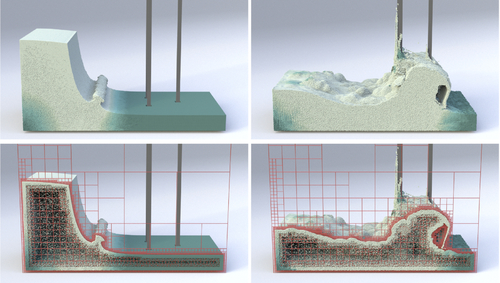
Abstract: Enabling adaptivity on a uniform Cartesian grid is challenging due to its highly structured grid cells and axis-aligned grid lines. In this paper, we propose a new grid structure -- the adaptive staggered-tilted (AST) grid -- to conduct adaptive fluid simulations on a regular discretization. The key mechanics underpinning our new grid structure is to allow the emergence of a new set of tilted grid cells from the nodal positions on a background uniform grid. The original axis-aligned cells, in conjunction with the populated axis-tilted cells, jointly function as the geometric primitives to enable adaptivity on a regular spatial discretization. By controlling the states of the tilted cells both temporally and spatially, we can dynamically evolve the adaptive discretizations on an Eulerian domain. Our grid structure preserves almost all the computational merits of a uniform Cartesian grid, including the cache-coherent data layout, the easiness for parallelization, and the existence of high-performance numerical solvers. Further, our grid structure can be integrated into other adaptive grid structures, such as an Octree or a sparsely populated grid, to accommodate the T-junction-free hierarchy. We demonstrate the efficacy of our AST grid by showing examples of large-scale incompressible flow simulation in domains with irregular boundaries.
Author(s)/Presenter(s):
YUWEI XIAO, Shanghai Jiao Tong University, China
SZEYU CHAN, University of Pennsylvania, United States of America
SIQI WANG, New York University, United States of America
BO ZHU, Dartmouth College, United States of America
XUBO YANG, Shanghai Jiao Tong University, China
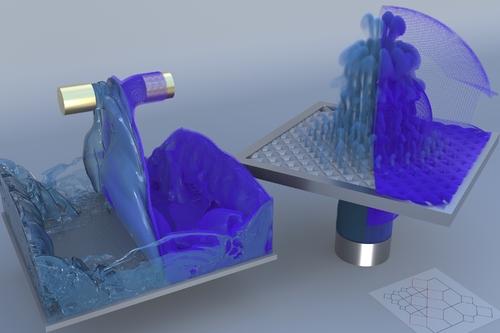
Abstract: We propose a simple and efficient method for guiding an Eulerian smoke simulation to match the behavior of a specified velocity field, such as a low-resolution animation of the same scene, while preserving the rich, turbulent details arising in the simulated fluid. Our method works by simply combining the high-frequency component of the simulated fluid velocity with the low-frequency component of the input guiding field. We show how to eliminate the grid-aligned artifacts that appear in naive guiding approaches, and provide a frequency-domain analysis that motivates the use of ideal low-pass and high-pass filters to prevent artificial dissipation of small-scale details. We demonstrate our method on many scenes including those with static and moving obstacles, and show that it produces high-quality results with very little computational overhead.
Author(s)/Presenter(s):
Zahra Forootaninia, University of Minnesota, United States of America
Rahul Narain, Indian Institute of Technology Delhi, India
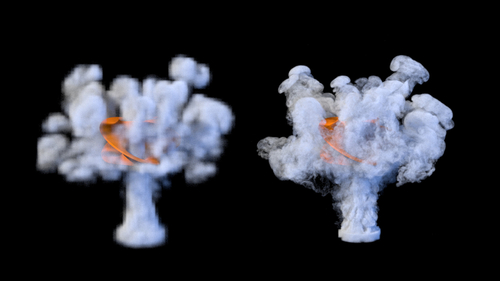
Abstract: In this paper, we present a novel semi-analytical boundary handling method for spatially adaptive and divergence-free smoothed particle hydrodynamics simulations, including two-way coupling. Our method is consistent under varying particle resolutions and allows for the treatment of boundary features below the particle resulution. We achieve this by first introducing an analytic solution to the interaction of SPH particles with planar boundaries, in 2D and 3D, which we extend to arbitrary boundary geometries using signed distance fields to construct locally planar boundaries. Using this boundary-integral based approach, we can directly evaluate boundary contributions, for any quantity, allowing an easy integration into state of the art simulation methods. Overall, our method improves interactions with small boundary features readily handles spatially adaptive fluids, preserves particle-boundary interactions across varying resolutions, can directly beimplemented in existing SPH methods, and, for non-adaptive simulations, provides a reduction in memory consumption as well as an up to 2x speedup.
Author(s)/Presenter(s):
Rene Winchenbach, University of Siegen, Germany
Rustam Akhunov, University of Siegen, Germany
Andreas Kolb, University of Siegen, Germany
